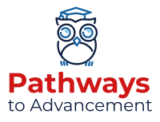Collaborative learning is a learning format that involves students working together in small groups to achieve a shared goal. Unlike traditional, independent learning, collaborative learning emphasizes peer interaction, active discussion, and the collective exploration of ideas. By creating an environment that fosters communication and teamwork, collaborative learning has become an essential part of modern education. For those exploring different learning formats to best fit their learning style, understanding the benefits, challenges, and formats of collaborative learning can help determine if it aligns with their needs. In this guide, we’ll dive into what makes collaborative learning unique and how to decide if it’s the right choice for you.
What is Collaborative Learning?
Collaborative learning is built on the concept of shared knowledge and mutual support. It allows students to work in groups or pairs, supporting each other’s learning while challenging individual perspectives. This process often involves group projects, peer-to-peer discussions, and team-based problem-solving, all of which encourage students to communicate effectively, divide responsibilities, and build consensus.
Examples of collaborative learning include:
- Group Projects: Small teams work toward completing a shared assignment or project.
- Peer-to-Peer Discussions: Students discuss topics or problems to find solutions together.
- Team-Based Problem Solving: Groups tackle complex issues by brainstorming and developing creative solutions.
By relying on group dynamics and collective knowledge, collaborative learning helps students learn not only from instructors but also from their peers. This approach contrasts with independent learning, where individuals work alone, often receiving feedback solely from instructors.
Benefits of Collaborative Learning
Collaborative learning offers a variety of benefits that enrich the educational experience and foster valuable life skills. Here are some of the most notable advantages:
Enhanced Critical Thinking and Problem-Solving
Collaborative learning provides an environment where students can encounter and consider multiple perspectives. Working with others requires individuals to defend their ideas and listen to counterarguments, which sharpens critical thinking and hones problem-solving skills. This environment of open dialogue often leads to more innovative solutions, as students build on each other’s ideas.
Improved Communication and Social Skills
Group-based learning activities improve students’ communication skills, as they must actively express ideas, listen to others, and negotiate differences. Through group interaction, students develop social skills such as empathy, active listening, and assertiveness, which are beneficial for both academic and professional life.
Increased Engagement and Motivation
Collaborative learning encourages students to be more engaged, as they are held accountable by their peers. Working in groups creates a sense of belonging and mutual responsibility, motivating students to contribute meaningfully. Students who might otherwise feel isolated in their studies may find a greater sense of purpose in a group setting.
Preparation for Real-World Work Environments
In nearly every professional field, collaboration is key. By practicing teamwork, communication, and conflict resolution in an academic setting, students acquire skills they’ll need in the workplace. These skills help students transition smoothly into careers where they’ll be expected to work alongside colleagues from diverse backgrounds and perspectives.
Collaborative Learning Formats
Collaborative learning can take many forms, each with its unique benefits and applications. Below are some of the most common formats:
1. Group Projects
Group projects involve multiple students working together to complete a shared assignment or task, typically with a common goal or final deliverable.
Benefits: Group projects allow for a division of labor, where each student can focus on a specific part of the project while still learning from others’ contributions. They also provide an opportunity to practice planning, delegating, and synthesizing various parts into a cohesive whole.
2. Peer-to-Peer Learning
Peer-to-peer learning occurs when students take on a mentor or guide role for one another. Students may alternate between the roles of teacher and learner within the same session.
Advantages: This approach allows students to reinforce their understanding by teaching others, while those being mentored gain knowledge from someone closer to their own learning level. Peer-to-peer learning is particularly beneficial for clarifying challenging concepts.
3. Team-Based Problem Solving
Team-based problem solving involves small groups tackling complex issues together, often in fields such as STEM, business, and healthcare.
Focus: By brainstorming and analyzing problems from multiple angles, students learn to approach challenges creatively and collaboratively. This format promotes innovation and allows students to learn from diverse viewpoints within the group.
4. Discussion Groups and Study Circles
In discussion groups or study circles, students gather to explore topics, often guided by questions from the instructor or readings.
Benefits: These sessions encourage active participation, enabling students to vocalize their ideas, question assumptions, and deepen their understanding. Discussion groups work well for students who learn through dialogue and enjoy sharing ideas with others.
Who Benefits Most from Collaborative Learning?
Collaborative learning can be beneficial for many types of learners. Below are some examples of who might thrive in these environments:
Social Learners
Social learners enjoy and excel in group settings where they can talk through ideas and interact with others. They gain energy and motivation from working with peers, making collaborative learning an ideal format for them.
Auditory Learners
Auditory learners process information best through listening. In a collaborative environment, they benefit from discussions and verbal exchanges, which help them retain information through dialogue and repetition.
Students in Practical Fields
Fields such as healthcare, engineering, and business often require teamwork and real-world problem-solving. Collaborative learning gives students a practical taste of what to expect in their careers, making it a beneficial format for these disciplines.
Kinesthetic Learners
Kinesthetic learners prefer learning by doing. Collaborative learning often involves hands-on activities and real-world projects, allowing kinesthetic learners to engage physically with the material through group tasks and interactive exercises.
Challenges of Collaborative Learning
While collaborative learning has many advantages, it’s not without challenges. Here are some potential obstacles students may face:
Group Dynamics and Conflict
Working in a group often involves managing different personalities, work ethics, and opinions. Disagreements are natural, but they can become obstacles if not resolved constructively. Effective communication and conflict-resolution skills are essential to navigating these dynamics.
Unequal Participation
In group settings, some members may contribute more than others, leading to imbalances in workload and potentially creating frustration. Setting clear expectations and accountability measures can help ensure that all members contribute fairly.
Logistics and Coordination
Coordinating schedules, meeting times, and tasks can be challenging, especially in hybrid or online formats where face-to-face interaction is limited. Effective time management and the use of digital collaboration tools can help overcome these logistical challenges.
Tips for Succeeding in Collaborative Learning
To make the most out of collaborative learning, students can apply the following strategies:
Setting Clear Roles and Expectations
Assigning specific roles and responsibilities from the outset helps everyone understand their part in the project. Clear roles can prevent misunderstandings and ensure tasks are distributed fairly.
Effective Communication Techniques
Regular check-ins, open discussions, and feedback loops can help groups stay on track. Practicing active listening, being open to others’ opinions, and expressing one’s ideas clearly are key to successful group interactions.
Leveraging Technology
Technology can facilitate collaboration, especially when in-person meetings aren’t possible. Tools like Google Workspace, Slack, or Zoom make it easy to communicate, share files, and stay organized, regardless of where group members are located.
Self-Assessment and Reflection
Encouraging group members to reflect on what went well and what could be improved promotes growth and accountability. Self-assessment helps students identify areas where they can enhance their collaboration skills.
Takeaways
Collaborative learning offers a wealth of benefits, from improving critical thinking and social skills to preparing students for real-world teamwork. It’s an excellent fit for students who thrive in interactive, social environments and prefer learning through discussion, hands-on activities, and teamwork. While it can present challenges, the right strategies can help students make the most of collaborative learning opportunities. For those exploring the best learning format for their style, considering collaborative learning is a step toward building a supportive, engaging, and dynamic academic experience.



